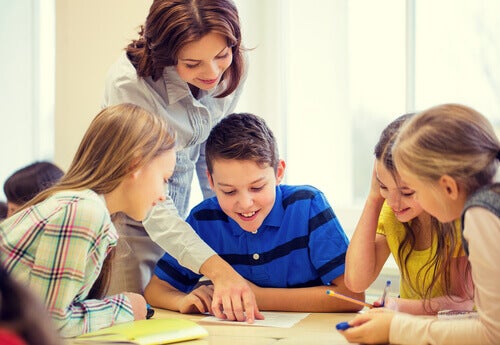“The united group remains united. ” With this phrase we can summarize the objectives that are pursued from the first year of schooling in the “puzzle class”: a class where you are educated with social integration, cooperation and empathy.
From the age of 6, children’s cognitive development has matured enough so that we can discuss with them how to avoid mistakes and control their behavior, so early childhood education is one of the best times to create behavioral habits based on peaceful and respectful coexistence.
- For most children.
- The first day of school symbolizes a huge change: they are no longer the children of the house to become students who have to assume new responsibilities.
- Obligations and acquire different roles.
Among them is the role of “student”, which forces them to learn to interact, develop and build relationships with other children of their age or of different ages and cultures. They establish new reference groups and adopt different criteria that generate many questions, judge. themselves and everything around them.
If all this already involves a change in attitude and stimulates their cognitive development, imagine what a class means to them with students of different religions, customs, skin colors and experiences acquired. Adaptation, if approached from a bad point of view, can be much more complicated.
Migration flows are leading to the transition from a monocultural to a multicultural society and the emergence of a ‘new citizenship’, so it is essential to understand that this reality can be an opportunity to educate children about tolerance, good coexistence and coexistence respect.
In this context, the puzzle class, implemented by Aronson, appears, which has been successfully used in groups of different levels of teaching and accustomed to different learning styles.
Class? Puzzle? It is a cooperative learning technique that seeks to strengthen the main structure (classroom), through the constant interaction and cohesion of each of its parts (children). Its methodology is dynamic, functional and simple. It consists of developing collaborative and working groups between colleagues to achieve a common goal.
This strategy sees each child as a key part of a group that only makes sense if they work consistently, together and with the same purpose During the school season, children are labeled in a certain way: the popular, the ignored, the rejected or the controversial Thanks to the kind of puzzles, all these roles become easier.
The origin of prejudice in children lies in a number of influences beyond the control of schools, however, the educator and educator continue to build the stages of the family educational pyramid and must be effective cultural mediators How to structure this technique?
Some of the advantages of the puzzle class over any conventional method that aims to improve relationships between students from different ethnic backgrounds are:
Class? Puzzle? It is therefore a cooperative teaching methodology that has proven to be very effective in promoting a climate of peaceful coexistence in the classroom, regardless of the age of the students, which establishes behavioral habits based on tolerance, mutual respect, intellectual and cognitive development, as well as collaboration and social practice.

